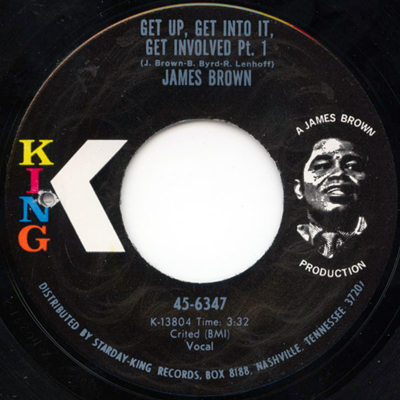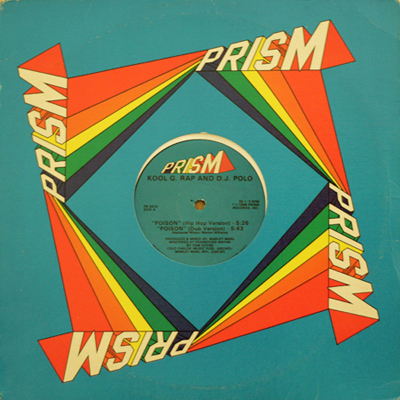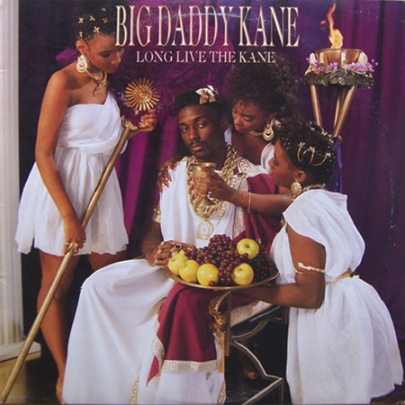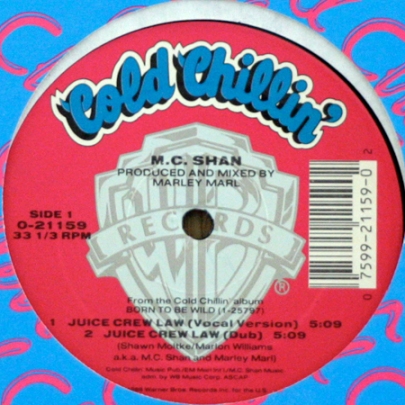A bit of a diversion from the Foolhardy Endeavour special records countdown/count-up – which I will return to shortly – but the records in the short tribute below are all worthy of that list.
I recently had a bit of a friendly argument with Matt Poacher over whether the main musical motif in this 1970 James Brown single is a riff or a lick. Apparently the latter is fluid and/or spacious, while the former must bludgeon. However, as I hear it, there are few things heavier and harder than JB’s most driving phrases. The sheer “everything on the one” insistence of his prime 1969-73 funk era grooves makes them as weighty as any rock riff. And this lick, if that’s what we must call it, is an especially good example; there’s definitely heft but as a rallying cry, it’s inclusive rather than oppressive. Maybe a riff is just a lick minus sex, I’m not sure I’ll ever be able to draw a definitive line.
Never mind, but what this record (as a whole) definitely is, is a break. In this case, a break in the evolved sense – there are no clean bars, open drums or obviously loop-ready lines, yet something secreted in the grooves, in the timbre, the momentum, made it so sample-worthy, it just needed deft application. The man responsible for its big break status also happens to be the catalyst for the evolution of the break, Marley Marl. Before DJ Premier took sample slicing to the nth degree and jungle-drum & bass made the endless reconstitution of single breakbeats a viable end in itself, Marlon Williams figured out how to reconfigure, reprogram and extract his own grooves from old records, thereby changing everything and making himself a hugely important figure in the development of hip-hop, studio-based dance music and by extension, the funk itself.
In 1988, a couple of years after he first applied his new techniques, he’d pretty much mastered them, and turned to “Get Up, Get Into It, Get Involved”, a record previously sampled for its a capella intro, for inspiration. THREE times during one year, with three different MCs from his own Juice Crew, he exploited the same source to very different effect, always producing results that were tough as old boots.
For Kool G Rap, one of the most aggressive rappers of the time – his savage cadence and lisp make him a true spitter – Marley constructs one of the most violent staccato ‘grooves’ ever heard in the genre, stabbing at the track over and over with snatches of guitar and horns. Brutal.
Did “Get Up…”‘s short guitar solo by (I think) “Catfish” Collins really have that sensual eastern feel before Marley looped it up and matched it with Big Daddy Kane’s rapid but super smooth delivery? It’s impossible to hear it any other way now.
If I remember correctly, MC Shan’s battle rhyme showcase was the last of these records to be released. Responding to the brief perfectly, Marley reduces JB’s riotous rhythmic exhortations into a stuttering, hip-jerking, monolithic war dance. The added tank-strength rumble comes via one of the first examples of a filtered bassline, adding kilos of sub-low pressure – proper speakers or headphones advised.





Maybe worth noting how often JB’s accapella’s vocals are used in turntablism too. Surely one of the most sampled artists ever – http://www.youtube.com/watch?v=O845pRlo4M8
Of course. I did mention how that track’s opening vocals were previously used a lot, but that wasn’t the topic at hand.
Re licks v. riffs… might be retreading old ground here but I feel like licks should be played by a single instrument. Is that just nonsense? I think that ostinato is so perfect for describing this record, but maybe it’s a word with baggage.
Oh, that might well be true. I don’t know. I guess ostinato covers both. And vamps. Let’s not get into vamps for now.
Riffs vs licks: yes, Jennifer. What I was told by guitar textbooks and teachers back when I was young enough to listen is a lick is a musical phrase/technique/ingredient, learned and played on an instrument to be part of other things and doesn’t have to be a standalone musical motif in its own right.
Then I’m pretty sure we covered vamps as well, but I thought it was such a silly word I didn’t really take an interest, so maybe I’m not that reliable a judge.